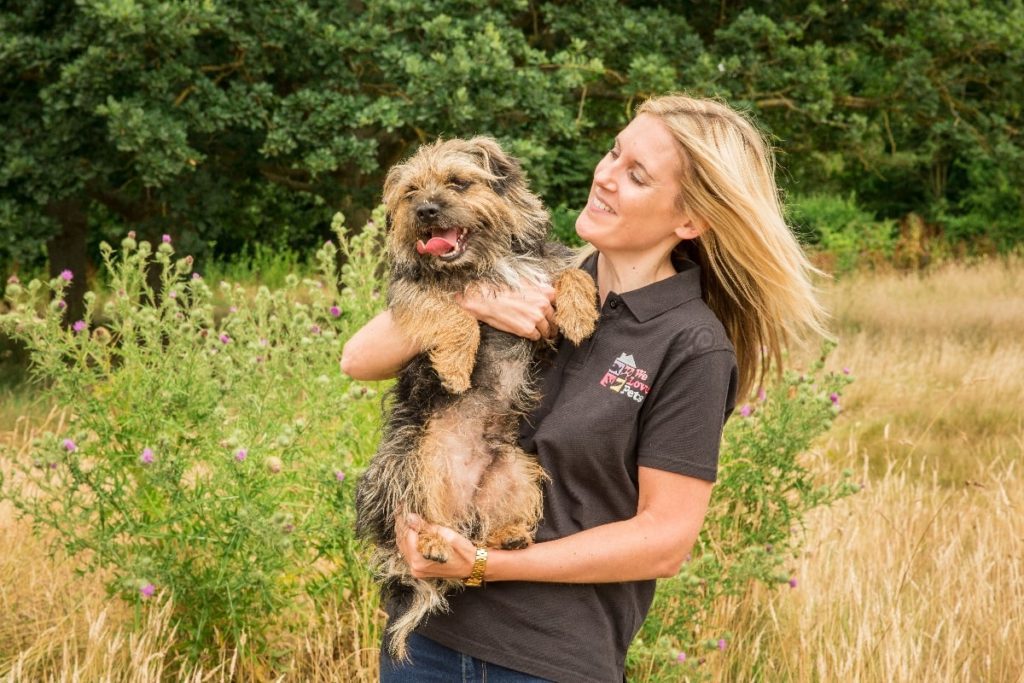by Vet Nurse and Franchise Owner Sophie Baldwin
Sophie tells us how to keep our dogs coat less smelly, and why they roll in yucky things on a walk.
Cats are fastidious cleaners and will spend large chunks of their day cleaning themselves. Their tongue is covered with little barbs and it can comb right through the coat down to the skin. This tongue design is often a reason why cats can easily self traumatise themselves with over grooming perhaps due to the presence of fleas or in some cases stress causing over grooming.
A dog however does not part the fur and get right down to the skin as well as a cat can. Although they lick their coats this does not clean it in the same way a cat cleans itself. A dog that has not been groomed for a while will smell and if your dog has bad breath due to dental issues it will transfer this smell to the coat. The bad smell of a coat may be made worse when the coat gets wet. This may be due to bacteria, yeast and other microorganisms that live on the dog normally and are harmless. Of course, the dog will pick up other bits of debris while out on walks and we have all met the dog, or own the dog that loves to roll in stinky things such as other animals poo or a decaying carcus!
A dog scent marks by defaecating and urinating. Contrary to what a lot of us believe rolling in poo or dead wildlife is a throwback to the dog’s evolution. In the bigger picture of the wildlife pecking order if the dog rolls in something smelly it has the potential to hide the dogs own scent from larger predators. Because this pungent smell is present in a wider area it marks the dog, ‘camouflaging ‘ it from perceived threats. Watch what your dog does if walking in an unfamiliar area. Will it seek out something smelly to roll in?
You may find your dog does this unattractive rolling more often after baths. Bathing a dog in a nice shampoo may smell good to us but to your dog it smells odd. They may feel their scent is now out of place in their environment and they don’t feel like themselves. The dog then seeks out an opportunity to cover that shampoo scent in something else. If you get mad with your dog or yell at them when they get in this mess it won’t stop it happening again. It could also be counterproductive in that the dogs recall could fall apart due to your angry body language and they will be less likely to respond when called.
The type of coat your dog has will often determine how often your dog needs bathing. If a short single layered coat like the greyhound it will have less fur to repel so dirt may build up on the skin. Breeds with thick coats help protect the skin and repel dirt. The longer hair provides an area for the oils from the skin to travel along the coat to keep it in good condition. A dog that sheds its hair may benefit from baths to remove dead hair and stimulate hair growth along with daily grooming when they go through a moult.
Dogs that make a beeline to muck and dirt will obviously need to be bathed more often. However regular grooming can help cut down the need for baths along with using wipes or dry shampoo to remove localised dirt reducing the frequency to be bathed.




